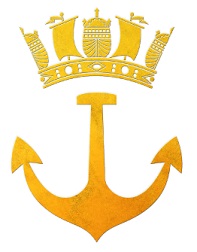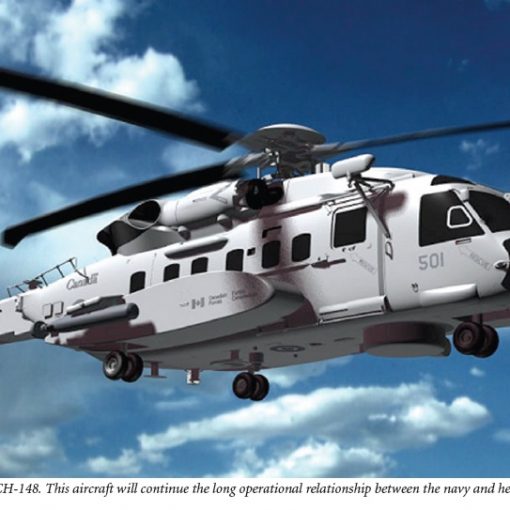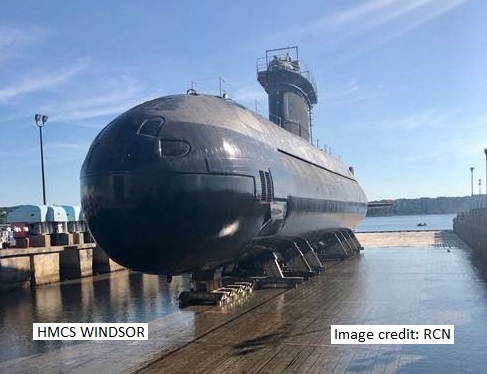By Jeff Gilmour, 20 October 2025
“It is not enough to stare up the steps, we must step on the stairs” Vaclav Havel
The government recently announced it intends to increase defence spending to 3.5% of GDP by 2035. Ottawa at last recognizes that the military has been neglected for decades and cannot fulfil Canada’s obligations to either NATO or NORAD. Currently the three services are suffering from a lack of personnel and new equipment to meet threats. DND is unable to fulfil many of its mandates and roles because of years of neglect and continued reduction of budgets. Action to improve this must take place sooner rather than later. Our military cannot wait decades to get military equipment that enables them to meet both defensive and offensive challenges.
The problem for the federal government will be to prioritize which service gets what new equipment and when. Each will argue that they need this equipment to improve their operational capability now - and many of these projects cost billions of dollars. It will be interesting to observe how the government will assign priorities in the coming months.
The following is a list of issues on which I suggest the Minister and DND should reflect when reaching their decisions:
- It is an appropriate time to initiate a new defence policy outlining new global threats and risks. Specific missions and mandates for the three services and the Canadian Coast Guard (CCG) in NATO, NORAD, Southeast Asia, the Arctic, and our domestic responsibilities should be identified with respect to improving security and defence in these theatres;
- Steps should be taken to promote mission integration and cooperation between the RCN and the CCG, similar to that of the USN and the US Coast Guard;
- The Minister of Defence recently promised pay increases for DND personnel. What will this initiative cost?
- In 2022, the government announced it had allocated $38.6B over 20 years to modernize NORAD capabilities. Such a plan will improve surveillance and over-the-horizon radar systems, command and control, and weapons and infrastructure to defend North America;
- The government has recently short-listed the purchase of 12 submarines to replace the ageing Victoria-class submarines. Firms from Germany/Norway and South Korea are currently in the running to complete a contract. South Korea has already stated it could provide the KSS-III submarines for $20-24B.[1] How effective will the new submarines be in the Arctic?Can the RCN provide crews for this number of submarines?Do we require 12 new submarines?
- As part of the National Shipbuilding Strategy (NSS) of 2010, Irving Shipbuilding Inc. in Halifax was awarded a contract to build up to 15 River-class destroyers at an estimated cost of $60B. (The Parliamentary Budget Officer (PBO) revised the cost to $73.9B in November 2023.[2]) The last ship would not be commissioned until the 2040s. In March 2025, Ottawa signed a contract for construction of the first 3 ships.
- Does Canada need a large surface fleet given the risks of new missiles and drones as demonstrated in the war in Ukraine?
- As an alternative, why not acquire fast patrol boats to protect our coastlines?
- Can the government afford to purchase both 15 new destroyers and 12 new submarines?
- Does Canada need a large surface fleet given the risks of new missiles and drones as demonstrated in the war in Ukraine?
- In June 2023, the government ordered 88 F-35 aircraft for the RCAF to replace the CF-18 Hornets. The cost was estimated at $19.8B with the final delivery in 2032. (The Auditor General of Canada estimated the total cost to be $27.7B with an additional $5.5B needed for full operational capability.[3]) In May 2024 the government said it would initially purchase only 16 F-35s, with the first delivery in 2026. The government is now considering whether to complete F-35 aircraft purchase or seek other fighter aircraft from another manufacturer.
- Now that DND is responsible for the CCG, it knows that many of the CCG ships need replacing. The CCG has 18 icebreaking vessels but only two are considered ‘heavies’ that can manage thick ice. A ‘polar max’ icebreaker is being built by Chantier Davie Inc. in Levis, PQ,[4] and a second ‘heavie’ icebreaker is being built for the CCG at the Seaspan shipyard in Vancouver. This will add billions more to the budget.
- The war in Ukraine has shown how lacking our Canadian Army is in modern military battle equipment. Troops need to acquire and train on various types of drones, and require anti-drone and anti-tank equipment, as well as a short-range air defence system.[5] As well, the ancient 2A4 Leopard tanks would be unable to compete against Russia’s most advanced tank. The Canadian Army is now looking at funding for the Indirect Fires Modernization Program which will likely cost $5B.[6] It will include the acquisition of self-propelled 155 mm artillery, new mortar systems, and fire control software. The second program is a new land-based range missile system, costing approximately $1B, such as the US High Mobility Artillery Rocket System (HIMARS). In a recent NATO exercise, the Canadian battle group suffered a high rate of equipment failure and was unable to obtain replacement parts.[7] Many of the problems were related to an inability to acquire necessary spare parts due to the age of the equipment.
- After decades of neglect, facilities and bases of the three services need immediate maintenance and repairs which will cost billions of dollars. In a recent visit to Nunavut, the Prime Minister promised $6.7B in funding including $6B for a new radar system, $20M for the CAF and $253M for infrastructure in the region.[8] In order to enhance Arctic security, money will have to be spent on improving military facilities at Yellowknife, Inuvik and Iqaluit.
For decades, defence and security issues had very limited exposure either in Parliament or during elections. DND budgets were gradually slashed with the result that the CAF reached a critical operational state - both in personnel and equipment. Then things changed. The war in Ukraine and prodding by the US President awakened politicians to the fact that defence and security were significant issues based on current global risks. Cabinet Ministers were now acknowledging that Arctic sovereignty, infrastructure and military presence had not been sufficiently addressed.
In the past, governments spread the acquisition of new equipment for the CAF over decades to save costs. Time is no longer on our side. To improve the operational capability of the three services and the CCG, action is urgently required, in terms of both personnel and equipment. Steps must be taken immediately to improve our defence position, particularly in the Arctic region.
The primary problem for the current government is to establish priorities in the purchase of new military equipment. The major projects mentioned earlier each cost billions of dollars. How does the government plan to raise the revenue to pay for such acquisitions? The argument in the past has always been to support building defence equipment in this country to bolster Canadian industry vs buying off-the-shelf. However, considering the time it takes us to build military equipment, and the cost of building in Canada, consideration will now have to be given to the purchase of new equipment for DND from other countries, such as South Korea and Europe.
Given all this, it will be interesting now to follow the progress the federal government makes in improving the operational capabilities of both the CAF and the Canadian Coast Guard.
[1] CBC News, M. Brewster, “South Korea wants to be Canada’s new military supplier,” 6 May 2025.
[2] Office of the PBO
[3] AI Overview
[4] Globe and Mail, D. Norman, “Work on icebreaker for Canadian Arctic begins at Davie Shipyard in Finland”, August 20, 2025.
[5] Globe and Mail, B. Curry, “Carney wraps European tour with visit to Canadian troops in Latvia”, 22 August 2025.
[6] Ottawa Citizen, D. Pugliese, “Canadian Army looks to spend more than $6 billion on new howitzers ad rockets”, May 28, 2025.
[7] CBC News, M. Brewster, “Parts shortage, snarled supply chains are sidelining Canadian vehicles and troops in Latvia: documents”. September 2, 2025.
[8] Nunatsiaq News, “Carney outlines $6-7B in Arctic Military, infrastructure upgrades during Iqaluit visit”, March 18, 2025.
Image: Prime Minister Carney, with Defence Minister McGuinty behind him, announces how Canada will get to 2% of GDP in defence spending by 2026 during an event in Toronto, 9 June 2025. Credit: David McGuinty's X account






3 thoughts on “The Promised Government Support for DND – Where Do We Begin?”
This article is a joke. Clearly the answer to his ridiculous question is yes Canada needs 12 submarines and yes Canada needs all 15 of the large surface combatant s only with more VLS cells. Replacing them with small fast patrol boats seriously ? Anti defense trolls pretending to be military pundits make me sick.
“The primary problem for the current government is to establish priorities in the purchase of new military equipment.”
Respectfully disagree. The primary problem is recruiting and retention. New equipment (sorely needed) will be of no use if the CAF has insufficient personnel to operate and maintain it – especially where skilled trades are concerned. A government has wide latitude to spend what it likes. It can finance procurement in a variety of ways, including debt. But military service is voluntary. Recruiting and retention cannot be achieved through government fiat.
Multiple Canadian government announcements in 2024 and 2025 have outlined billions in new funding for DND, with the goal of increasing defence spending and addressing a readiness crisis. However, critics and recent reports point to significant and long-standing problems that have delayed the delivery of this promised support and hampered the CAF’s ability to meet operational commitments.
Sources of promised funding:
• Defence Policy Update (April 2024): The policy, titled “Our North, Strong and Free,” pledged new defence spending of $8.1 billion over five years and $73 billion over 20 years. This money was intended to strengthen Canadian sovereignty in the Arctic and provide new capabilities for the CAF.
• NORAD Modernization (June 2022): The government committed $38.6 billion over 20 years to modernize the North American Aerospace Defence Command (NORAD). The funding covers new radar systems, enhanced surveillance, and upgrades to infrastructure.
• Budget 2024 (April 2024): The federal budget included initial investments towards the new defence policy, such as $1.2 billion over 20 years for DND’s Capital Investment Fund. It also confirmed Canada’s commitment to increase defence spending to 2% of GDP by 2032.
• NATO Defence Investment Pledge (June 2025): At the NATO Summit, Prime Minister Mark Carney joined a new pledge to increase defence spending to 5% of GDP by 2035.
Delays and challenges:
Despite these commitments, multiple issues are preventing the funding from effectively translating into military capability.
• Slow procurement system: Major procurements for equipment like fighter jets and naval vessels are notoriously slow, with years of delays. Critics note that a culture of deferring difficult procurement decisions has left the military with outdated and unreliable equipment.
• Projected funding vs. actual spending: Reports from the Parliamentary Budget Officer (PBO) found a cumulative shortfall of nearly $12 billion between planned and actual capital spending between 2017 and 2021. The PBO also noted that the majority of planned new spending is “back-ended” and scheduled to roll out after the 2025 federal election, which raises concerns about inflation reducing the actual purchasing power of the promised funds.
• Operational budget cuts: At the same time as new investments are announced, the DND is undergoing operating budget cuts mandated by the federal government to curb spending. As of 2025, these cuts amount to approximately $900 million annually and are projected to continue.
• Lapsed funds: Because of a flexible funding model and delays, DND is allowed to re-profile or push unspent funds into future years. In 2022–2023, nearly $1.6 billion was unspent and made available for future use. This practice, while providing flexibility, also fuels criticism about the slow pace of investment.
• Ongoing readiness issues: The CAF continues to face critical readiness issues, with internal reports highlighting equipment shortages and low serviceability rates for all fleets. As of early 2024, the CAF remained thousands of members short of its authorized strength.
Where the money has gone:
While a lack of tangible improvements is evident, some of the promised funding has been allocated to specific projects and areas:
• Personnel: Funds have been allocated toward retention initiatives, recruitment efforts, new housing, and childcare access for military families. Pay increases have also been announced for military personnel.
• Arctic infrastructure: Investments include new Northern Operational Support Hubs and upgrades to NORAD Forward Operating Locations.
• Equipment purchases: Despite slow delivery, some procurement is moving forward. For example, a contract for the construction of the first of 15 River-class destroyers was signed in March 2025, and some F-35 fighter jets have been ordered.